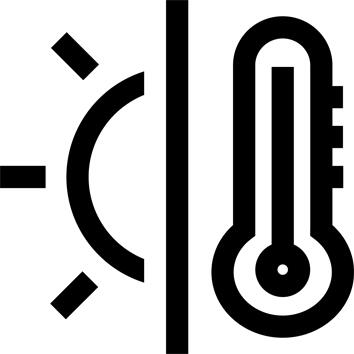Thermal insulation details
Integral wet single-piece 3 mm with back closure. Watertight seams thanks to GBS (GBS Glued & Blind Stitched) bonding. Once the thin film of water (drawn in through the ZIP) is trapped between your body and the suit, there is no water circulation and therefore no water renewal. It is this film of water that provides your thermal insulation.
Smooth rolled edges at wrists, ankles and neck for maximum watertightness.
Glued and sewn joints - GBS
The wetsuit's seams are waterproof, assembled using GBS (Glued and Blind Stitched): the neoprene is first glued, then sewn for maximum strength (the needle doesn't go all the way through the neoprene to prevent water infiltration).
Greater comfort when carrying diving equipment
Combination specially developed to increase comfort when wearing the stabilizer vest and boulder.
Neoprene reinforcements strategically placed on the support zones of the vest. 5mm of additional neoprene positioned on the shoulders, collarbones and lower back (lumbar zones) to act as a cushion.
Carabiner on upper thigh for attaching accessories.
Reinforcements to limit wear
The suit is fitted with reinforcements on the knees to limit wear. There are also prints on the friction zones associated with the stabilizer vest (shoulders and lower back). This also helps keep the vest in place and prevents it from sliding down the sides.
Freedom of movement / Combination threading
One-piece with side panels and ends in stretch neoprene (highly flexible, elastic neoprene) to facilitate morphological adaptability and maximum fit for different body shapes.
Leg and arm ends are also in stretch neoprene for easy donning.
No seams under the armpits to facilitate arm mobility.
Why use a 3 mm combination?
Even in warm water, the body will eventually cool down (25 times faster than in air). Using a thin 3 mm wetsuit will enable you to limit this drop in temperature, so you can enjoy your activity for longer. In addition, using a full-body wetsuit provides almost total protection from UV rays and the underwater environment (coral reefs, etc.).
Thermal performance class
This scuba diving suit offers thermal protection tested by the independent institute INPP (Marseille-France) to validate its compliance with the current standard NF EN 14225-1:2017
This suit is approved for water temperatures above 25°C.
What is a wet suit?
This type of wetsuit is the most common on the market. Its purpose is not to act as a barrier to the water, but rather to trap it and allow your body to warm it up, creating a thermal buffer between you and the outside world.
Made from neoprene - a rubber polymer filled with air bubbles - these suits come in thicknesses from 0.5 to 7 mm .
As such, they make excellent wetsuits, as they are flexible and modular.
Tips for donning your wetsuit?
Slip your foot into a plastic bag. Then tuck your leg into your wetsuit... Your foot comes out in its entirety and without snagging! To adjust it, ask someone else to blow into your sleeve from the wrist. The air intake inflates the inside of the neoprene suit and instantly lifts it off your skin. You can then easily make final adjustments.
Tips for maintaining your wetsuit
1) After each session, soak the suit in clear water on both the inside and outside. 2) Use a bactericidal solution to sanitize. 3) Rinse well with clean water. 4) Dry on a wide hanger in a shaded, well-ventilated area. Beware of the sun, as it discolors the textile parts of the suit. Zippers can be cleaned with a toothbrush and oiled with a suitable lubricant, such as silicone grease.
Weight
L: 1.2 kg
XL: 1.3 kg









